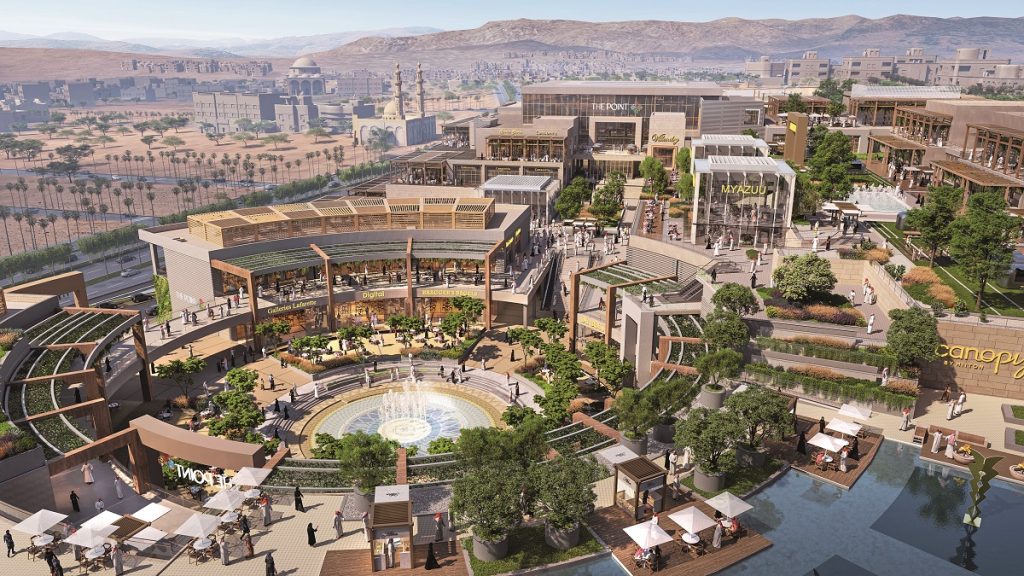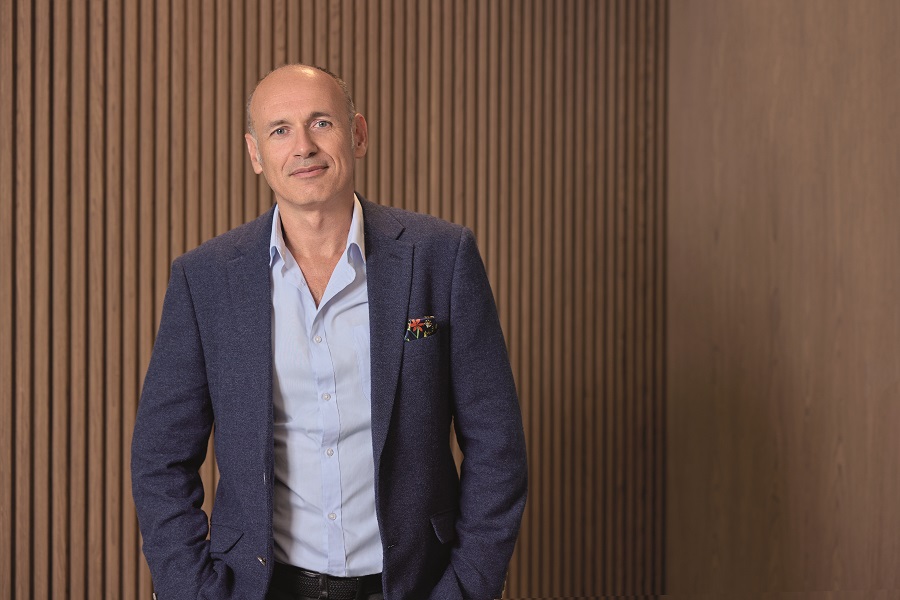Scott Pryde, Principal, and Middle East Design Director at DLR Group, discusses the economic impact of mixed-use developments on local communities.
In the landscape of urban planning, mixed-use developments have emerged as powerful catalysts for economic growth and community enhancement. These multifaceted projects blend retail, residential, commercial, and hospitality spaces, fostering a vibrant environment beyond traditional urban planning paradigms.

The Point, Abha, Saudi Arabia
Abha’s groundbreaking project, The Point, is situated in southwestern Saudi Arabia, within the Asir Region, which is well known for its rich cultural heritage and stunning natural landscapes. The Point, a vibrant mixed-use development, exemplifies a visionary approach to urban planning. It aims to create a self-sustaining community that fosters economic prosperity while preserving the region’s unique identity.
The development is strategically situated on King Fahd Road between Abha and Khamis Mushait, establishing itself as a central hub for shopping, entertainment, and hospitality. This prime location not only enhances accessibility but also bolsters local businesses and entrepreneurs. Aligned with Saudi Arabia’s Vision 2030, the project aims to diversify the economy, reduce dependence on oil revenues, and promote tourism and trade, thereby contributing significantly to the region’s economic and social development.
Diversification of economic activities
One key economic benefit of mixed-use developments is the diversification of economic activities. In the case of The Point, integrating retail, residential, commercial, and hospitality spaces attracts a diverse range of businesses and entrepreneurs. From local artisans to global retailers, the project will become a hub for various industries, creating a resilient and dynamic local economy.
Job creation and skill development
Mixed-use developments are significant contributors to job creation. The Point will generate employment opportunities during the construction phase and sustain long-term jobs across multiple sectors. Moreover, the variety of businesses within the development leads to skill diversification, empowering the local workforce with a broad range of competencies.
The project is expected to contribute to generating between 1,500 and 2,500 direct job opportunities in the region, with investment opportunities for small-scale businesses. The development will house over 150 retail outlets, 41 restaurants and cafes, a 150-room hotel, a 100-key serviced apartment, a 1,000m2 youth centre, a 3,000m2 health centre, and ten cinemas. Each of these facilities will require staff for operations, management, customer service, and maintenance, creating numerous long-term job opportunities for the local population.

Scott Pryde, Principal, and Middle East Design Director at DLR Group
Rings of value
Creating destinations with inherent value not only enhances the economic strength of an area but also fosters social connectivity, attracting more people and boosting the local population. These destinations serve as focal points for community engagement, cultural exchange, and economic activity, thereby contributing to the overall vibrancy and growth of the region.
Vibrant entertainment districts with restaurants, theatres, and entertainment venues like The Point become lifestyle destinations, attracting locals and tourists, and spurring investment in surrounding businesses. The Point is a major tourism draw, attracting visitors interested in experiencing Asir’s historic charm, and giving them convenient access to accommodations and amenities.
Another example of the rings of value is that property values experience a significant boost near mixed-use developments, benefiting both existing homeowners and the municipality.
Community engagement and social capital
Beyond economic metrics, mixed-use developments foster community engagement and social capital. The Point emphasises communal spaces, parks, and cultural centres, which provide residents with opportunities to connect, share experiences, and build a sense of belonging. Strong social networks contribute to the community’s overall well-being and stimulate a supportive environment for local businesses.
Sustainable practices and environmental impact
The Point prioritises sustainability, incorporating green spaces, energy-efficient technologies, and eco-friendly design principles. The development incorporates 50,000m2 of green and open space, sustainably sourced vegetation, and building materials that reflect the local heritage and culture of the Asir region. Additionally, the project design includes infrastructure for pedestrian safety, car-free zones, and accessibility features for guests with special needs.
This contributes to the global call for environmentally conscious urban planning. Such initiatives enhance residents’ quality of life and attract ecologically conscious businesses, reinforcing the region’s economic vitality.
It is in DLR Group’s DNA to elevate the human experience through design. The Point showcases how thoughtful urban planning can enrich the economy. As we shape the cities of tomorrow, we must emphasise creating environments that inspire us aesthetically, enhance our well-being, strengthen our community connections, and promote economic prosperity.
This article was originally published on Construction Week Middle East.
 By Grace Donnelly
By Grace Donnelly